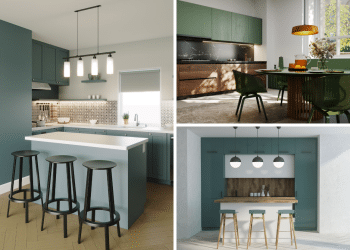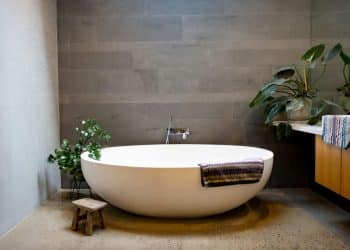Table of Contents
Interior designing is a lucrative career but the competition is tough as well. With a stellar resume, you can make your profile stand out and land your dream job.
Interior designers specialize in perfecting every minor detail to showcase a space. Try to follow the same approach with your resume. Nearly anyone can make a resume but curating it with details is a tough thing to achieve.
In this guide, we will provide you with 5 pro tips to compose and optimize an interior design resume that will help you target the most coveted jobs.
Let’s begin.
Compose a work experience section
The work experience section defines your professional tenure with achievements and job responsibilities. It showcases your career trajectory and how your experience makes you the ideal candidate for the job.
In this section, you can mention your areas of expertise and the results of utilizing these skills. It will play a major role in determining your chances of success in landing your dream job. So, compose this section by using the following best practices:
- Use one-liner points: You need to make sure the readability of your resume does not suffer while framing statements for each organization you worked at. Be very articulate while writing points and keep them restricted to one line. You can follow the STAR format approach, it will help you focus on the tasks you performed.
- Bucketing & bolding: Listing more than 5 points in one go defeats the purpose of writing statements. The information looks crowded and significantly decreases the readability. Also, since a recruiter does not spend more than 6 seconds on a resume, you need to make sure that your resume is easily understandable. To master this, it is advisable to bold important information and give a unique subheading to 3-4 points. For instance, the subheadings for an interior designer resume can be “resource utilization & design strategy”.
Include your skills
Your suitability for a job in interior designing is determined by the skills you possess. It is important that you add the required transferable skills and mention your core competencies that showcase your specific skill-set.
Though, it is important to highlight your expertise and make buckets in the professional experience section. But the idea is that the recruiter should not have to read your resume to find the relevant skills.
To get recruiters to notice your skills, we suggest you create a separate skills section. For reference, here are a few skills that an interior designer should write in a resume:
- Budget Management
- Resource Optimization
- New Construction
- Client Relationship
- Space Utilization & Designing
Write a summary
You need to compose a resume summary by including your professionals accomplishments and expertise in-line with the target profile. Ideally, your summary should be concluded with 2-3 sentences and not go beyond 3-4 lines.
The summary section is placed right below your name at the top of your resume, it is highly likely that this is the first thing that the recruiters read. We advise you to include pointers relevant to the target profile that will help improve your chances of getting shortlisted.
Here is an example of a professional summary for an interior designer:
“5+ years experienced Interior Designing professional with a stellar record of liaising with key stakeholders and understanding the client’s requirements to spearhead the design process. Adept at optimizing resources and managing budget to achieve customer satisfaction. Proficient in utilizing the space to incorporate new style, design, and decorations.”
Optimize your resume to pass the ATS
Applicant Tracking System or ATS is a software application that helps organizations screen applicants as per job related requirements/keywords.
Optimizing your resume to pass the ATS improves your chances of getting shortlisted. The profile you are targeting will have a job description, it has all the required keywords in terms of years of experience, education/certification details, and industry expertise.
Let’s say the recruiter wants ideal candidates to have industry experience in “space utilization”. If you possess these skills, you can highlight this proficiency in the key skills section or add it as a subheading in the professional experience section.
This is to achieve a balance between the ATS and showcasing skills for the recruiter. It is imminent that the recruiter will go through your resume after the ATS screening process. So you should highlight the relevant information to make it easily accessible.
Fix the structure
The structure of your resume will define the way it is perceived. You need to compose all the sections in a manner that make your resume look pleasant and readable.
Organizing your resume well and minimizing the white space can dramatically improve its outlook. Also, it will help recruiters look for the information they wish to see. That is why it is important to name your sections properly.
Here are some fundamental sections that your resume must have:
- Header: Write your name and relevant contact information here.
- Profile title: Include your job title here and do not name it as “CV” or “Resume”.
- Key skills: Just add all the relevant core skills and avoid writing paragraphs here.
- Summary: Make sure it is in a paragraph format.
- Professional experience: Follow the reverse chronological order to write your work history.
- Education/Certifications: Include education details and all the relevant certifications.
Additionally, make sure you compose your resume by using professional fonts like Calibri, Times Roman, Arial. Some organizations still use outdated ATS applications that are unable to parse information with fancy fonts.
Key takeaways
Here are a few key takeaways from the article:
- Compose a work experience section by using the statements, bolding, and bucketing approach.
- Include your skills to showcase your industry expertise.
- Write a summary that exhibits your professional achievements and job-relevant expertise.
- Include keywords to pass the applicant tracking system.
- Fix the structure of your resume and correctly name all the sections.







